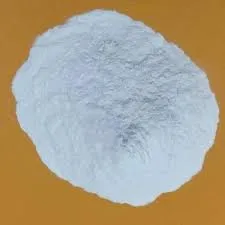
Hyd . 02, 2024 03:14 Back to list
Understanding HPMC and Its Applications in Various Industries
Understanding HPMC An Overview
Hydroxypropyl Methylcellulose (HPMC) is a versatile cellulose ether that has gained significant attention in various industries due to its unique properties. This compound is derived from natural cellulose, which is modified to improve its solubility and functionality. HPMC is commonly used in pharmaceuticals, food, construction, and cosmetics, making it an essential additive in numerous applications.
Composition and Properties
HPMC is synthesized through the reaction of cellulose with propylene oxide and methyl chloride. This process alters cellulose by introducing hydroxypropyl and methyl groups, which contribute to its solubility in water and organic solvents. HPMC is characterized by its white, odorless, and tasteless powder form, which can dissolve in cold water to form a translucent gel.
One of the most notable features of HPMC is its ability to form thick solutions and gels, making it an excellent thickening agent. Additionally, it exhibits good emulsifying, stabilizing, and binding properties, making it particularly useful in formulations that require these attributes. HPMC is also non-toxic and biocompatible, enhancing its value in pharmaceutical and cosmetic applications.
Applications in Pharmaceuticals
.
Moreover, HPMC is often used as a film-forming agent in coating formulations for tablets and capsules. This coating not only improves the appearance of the pharmaceutical product but also protects it from moisture, light, and oxygen, thus enhancing its shelf life.
hpmc چیست

Role in Food Industry
HPMC's application in the food industry is equally remarkable. It functions as a food additive, primarily as a thickener, stabilizer, and emulsifier in various food products such as sauces, dressings, and baked goods. Its ability to create a desirable texture while enhancing the product's overall quality is beneficial in food manufacturing.
Moreover, HPMC is calorie-free and gluten-free, which makes it an appealing ingredient for health-conscious consumers. It can replace fat in certain formulations, providing a healthier alternative without compromising taste or texture.
Uses in Construction and Cosmetics
Beyond pharmaceuticals and food, HPMC plays a crucial role in the construction industry. It is utilized as a mortar additive in cement-based products, improving workability and adhesion properties. This functionality enhances the overall performance of construction materials, ensuring durability and longevity.
In the cosmetics realm, HPMC serves several purposes. It is used in lotions, creams, and gels as a thickening agent and stabilizer, helping to create a smooth, appealing product. Its film-forming properties also allow it to be used in hair care products, providing a protective layer that enhances shine and manageability.
Conclusion
Hydroxypropyl Methylcellulose (HPMC) is an exceptionally versatile compound with applications spanning multiple industries. Its unique properties, including solubility, thickening ability, and non-toxic nature, make it a valuable ingredient in pharmaceuticals, food, construction, and cosmetics. As industries continue to seek innovative solutions for enhanced product performance, HPMC is likely to remain a critical additive due to its multifunctionality and effectiveness. As research and development continue to explore its potential, the future looks promising for HPMC in various fields, reinforcing its significance in our daily lives.
-
Versatile Hpmc Uses in Different Industries
NewsJun.19,2025
-
Redispersible Powder's Role in Enhancing Durability of Construction Products
NewsJun.19,2025
-
Hydroxyethyl Cellulose Applications Driving Green Industrial Processes
NewsJun.19,2025
-
Exploring Different Redispersible Polymer Powder
NewsJun.19,2025
-
Choosing the Right Mortar Bonding Agent
NewsJun.19,2025
-
Applications and Significance of China Hpmc in Modern Industries
NewsJun.19,2025







